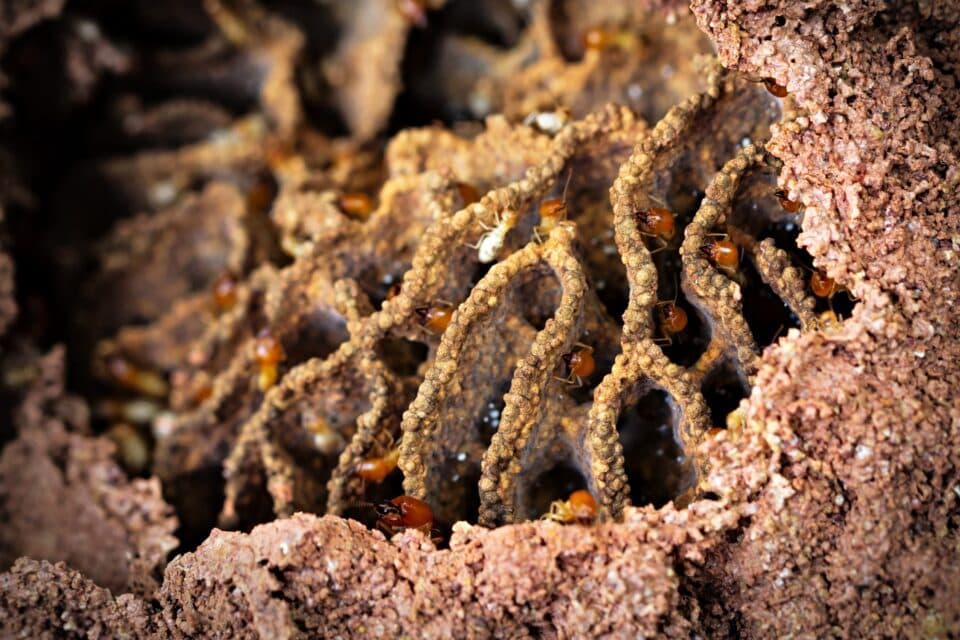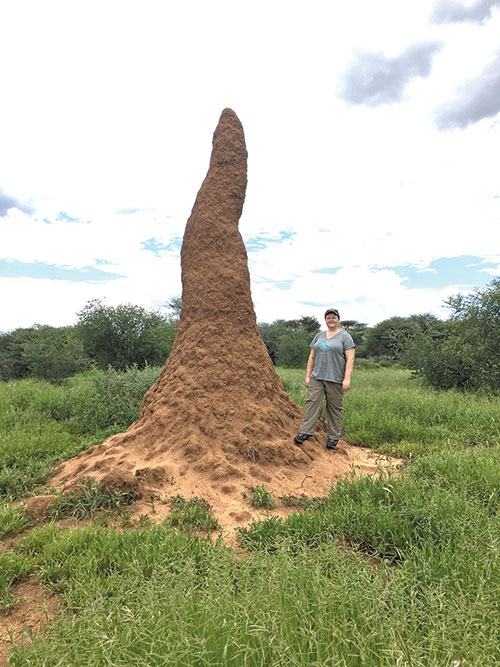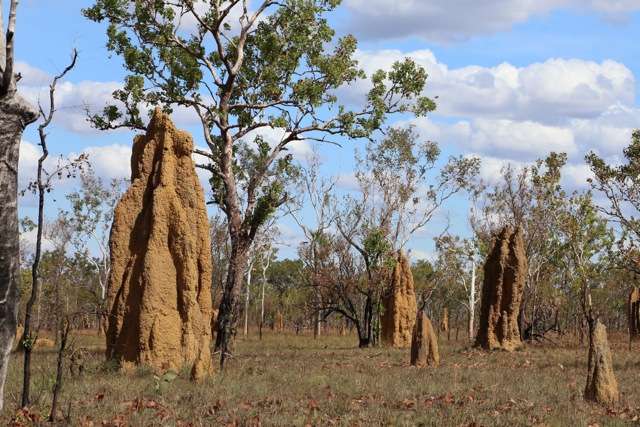Termites are master engineers who can build enormous, complex nests that stand several meters tall. They build intricate tunnels that have natural air conditioning. But how do these tiny creatures coordinate to create such impressive structures? A study by researchers at the IMT School for Advanced Studies in Italy has cracked the mystery.
 Termites focuse their building efforts on specific spots. The scientists noticed that termites were obsessed with curvature. They consistently added their pellets to the most curved surfaces. Termites favored pillar tops, and even the sharp corners of little walls given to them. This led the researchers to a simple yet brilliant solution. Since curved surfaces affect things like airflow and moisture differently than flat areas, it suggests that termites might be sensing and reacting to subtle environmental changes caused by the shape of the structures.
Termites focuse their building efforts on specific spots. The scientists noticed that termites were obsessed with curvature. They consistently added their pellets to the most curved surfaces. Termites favored pillar tops, and even the sharp corners of little walls given to them. This led the researchers to a simple yet brilliant solution. Since curved surfaces affect things like airflow and moisture differently than flat areas, it suggests that termites might be sensing and reacting to subtle environmental changes caused by the shape of the structures.
 Termites are super-sensitive to humidity. Unlike many insects, their soft skin makes them vulnerable to drying out. Termites have built-in sensors that help them detect even small differences in humidity levels within their surroundings. They are naturally drawn to areas where the air holds more moisture. Clearly, when a termite adds a clay pellet to a structure, it slightly alters its shape. This tiny change influences how air flows around it, and how quickly water evaporates from that spot.
Termites are super-sensitive to humidity. Unlike many insects, their soft skin makes them vulnerable to drying out. Termites have built-in sensors that help them detect even small differences in humidity levels within their surroundings. They are naturally drawn to areas where the air holds more moisture. Clearly, when a termite adds a clay pellet to a structure, it slightly alters its shape. This tiny change influences how air flows around it, and how quickly water evaporates from that spot.
 Even though a single termite isn’t trying to communicate, their act of building changes the local humidity. Other termites, also seeking the most comfortable spots, sense this change. They become more likely to deposit their own clay pellets in that same area, further altering the structure and the moisture patterns around it. This continuous feedback loop is the magic ingredient. Each termite simply responds to the immediate humidity levels.
Even though a single termite isn’t trying to communicate, their act of building changes the local humidity. Other termites, also seeking the most comfortable spots, sense this change. They become more likely to deposit their own clay pellets in that same area, further altering the structure and the moisture patterns around it. This continuous feedback loop is the magic ingredient. Each termite simply responds to the immediate humidity levels.
 As thousands of termites make these tiny adjustments, elaborate nests emerge. These nests boast tunnels for travel, chambers optimized for airflow, and structures that help maintain the perfect internal humidity for the whole colony.
As thousands of termites make these tiny adjustments, elaborate nests emerge. These nests boast tunnels for travel, chambers optimized for airflow, and structures that help maintain the perfect internal humidity for the whole colony.
Nature shows us that sometimes it’s not about grand plans, but simply responding to your environment, one small step at a time. That’s a lesson humans building their own communities might take to heart.
You can read the original article at www.earth.com


So, should we really be using termite mounds as inspiration for our cities? As well as some benefits, skyscrapers also have disadvantages too! For starters, high-rise buildings cost more per square foot or square meter than low-rise buildings of similar materials and amenities, this is largely due to the engineering required, and because of the complex infrastructure, these buildings are more maintenance intensive than low-risrs. These costs are passed on to the tenants in the form of much higher rents or condo fees than for shorter buildings (rents can be more than twice as much for a high-rise apartment as opposed to the equivalent low-rise apartment in the same city, especially if the building offers recreational facilities and certain services like swimming pools, fitness suites, concierge, etc), or in the case of public housing projects, to the taxpayers (or the public housing building gets neglected and turns into a crime ridden, rundown slum, which is the more likely option in many countries). Also, living on the 40th+ floor of a high-rise apartment building places people far from the streets and meeting places downstairs, whereas in a low-rise apartment, even those living in top floor units are just a few flights of stairs away from the street, where they can walk to the shops, socialize at the curb, etc.